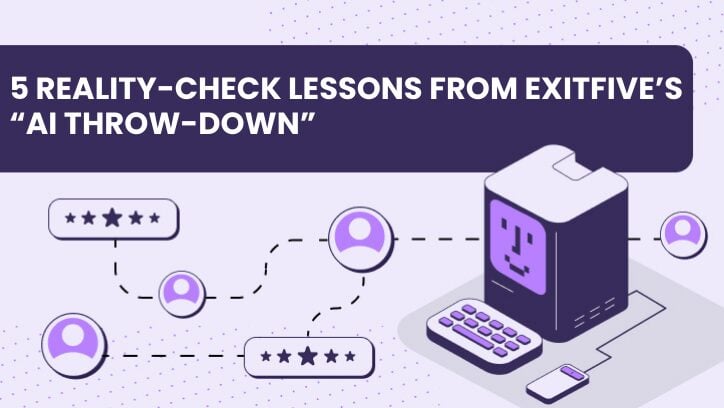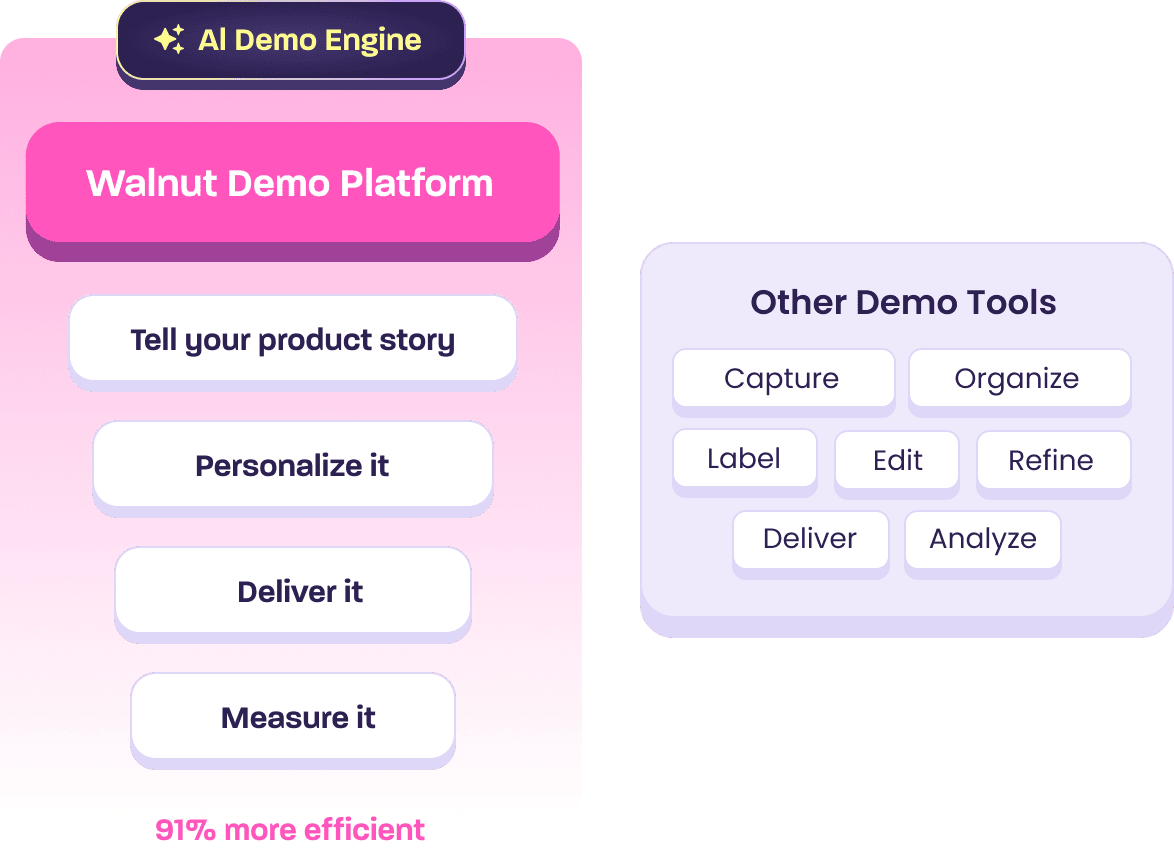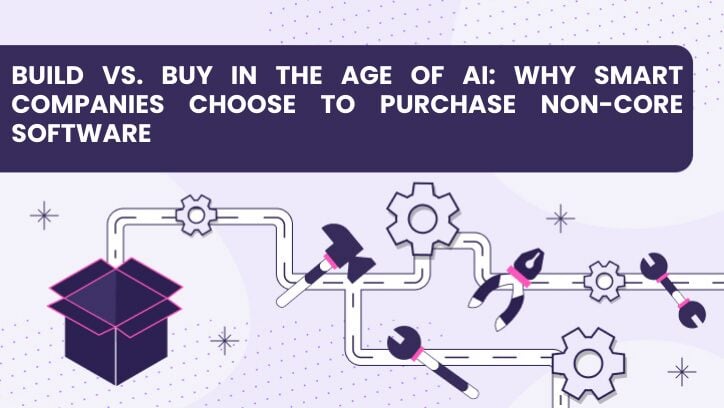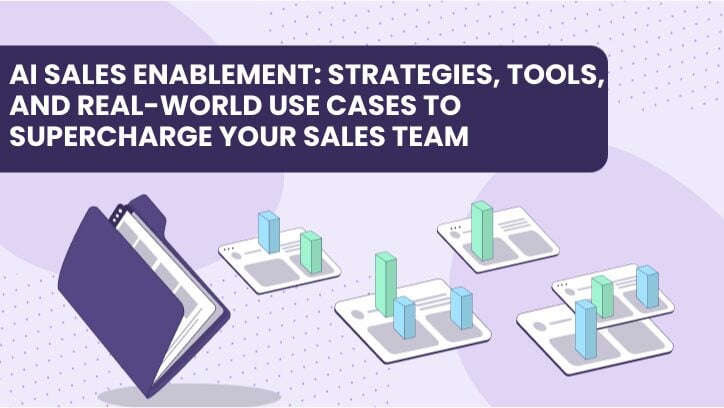ExitFive recently hosted its highly anticipated “AI Throw-Down,” an event that brought together five marketing professionals for a rapid-fire showcase of real-world AI applications. Unlike many discussions around artificial intelligence, this event deliberately steered clear of generic AI and focused instead on tangible, effective use cases.
The challenge was straightforward: each marketer had precisely five minutes to show what was truly working in their marketing efforts with the help of AI. These presentations were judged live. The content was fast-paced, highly specific, and engaging, providing everyone who attended actionable insights rather than abstract theories.
Below are the five lessons your team can steal this quarter, plus how they map to what we found in Walnut’s The State of Generative AI in B2B Marketing study.
1) Creativity and context still separate great from generic
AI has compressed a lot of the heavy lifting. the variable that moved audiences was creative judgment and context. As the host put it, marketers who know how to wield these tools will elevate the whole content motion.
What to steal next week
- Treat AI like your “intern with a PhD.” Push it with precise prompts, brand constraints, and inputs from your best customer evidence. Its capabilities are vast, but its output quality is directly proportional to the precision and thoughtfulness of your input. To unlock its full potential, feed it with meticulously crafted prompts, clearly defined brand constraints, and rich inputs derived from your most compelling customer evidence. This structured approach ensures that AI-generated content aligns perfectly with your brand voice and strategic objectives.
- Build a tiny “content concierge” GPT trained on your research to surface on-brand stats and quotes for every draft. By training a dedicated GPT on your internal research, historical data, and brand guidelines, you can create a powerful tool that automatically surfaces on-brand statistics, compelling quotes, and relevant data points for every draft. Gillian’s demonstration, where report data was seamlessly injected into live copy edits, exemplifies the efficiency and accuracy this approach can bring to your content creation workflow.
What we see in the market: Our recent study, “The State of Generative AI in B2B Marketing,” provides a clear picture of the current market reality: AI adoption is indeed widespread, but the level of maturity in its application varies significantly across organizations. The primary bottleneck isn’t a lack of sophisticated tools; rather, it’s a deficiency in proper enablement and strategic integration. Teams that achieve significant wins with AI are those that prioritize formalizing their approach.
This includes developing comprehensive prompt libraries, establishing clear guardrails for AI usage, and investing in robust training programs. By implementing these measures, organizations can ensure that creativity scales safely and efficiently, empowering their teams to leverage AI as a powerful catalyst for innovation without compromising brand integrity or accuracy.
The ExitFive event underscored a critical insight: while AI handles the heavy lifting, the true differentiator that captivates and moves audiences remains human creative judgment and contextual understanding. As the host eloquently articulated, marketers who master the art of wielding these powerful AI tools will not only streamline their workflows but also elevate the entire content production process, leading to more impactful and resonant messaging.
2) Ship revenue-connected tools, not “AI slop”
Jessica won the day with a no-code ROI calculator for construction-tech AEs. It builds urgency in MEDDIC, produces a CFO-ready PDF, and even runs at the booth and on discovery calls. The kicker: it took prompts, not sprints.
What to steal next week
- Pick one late-stage friction (pricing, risk, compliance). Ship a transparent, benchmarked calculator that AEs can run live.
- Publish the assumptions. Avoid the “always-wins” gimmick the judges called out. Buyers reward clarity.
What we see in the market: Buyers increasingly demand AI-backed ROI proof, not features. Implement calculators and surface measurable outcomes in decks, QBRs, and deal rooms.
3) Dev cycles are collapsing—use them
“Prompt to app” is real. Jessica built a working tool without being a developer, turning what used to take months into minutes, with in-tool editing to iterate quickly.
What to steal next week
- Time-box a 48-hour “micro-app” sprint for one sales blocker. Aim for usable, not perfect.
- Pair a PMM with an AE. If it doesn’t help run a real call or move a deal this month, it’s a science project.
What we see in the market: Despite broad adoption, few teams apply AI beyond text. There’s white space in richer formats—interactive demos and video—where speed-to-value is obvious.
4) Build AI ops (pipelines, not just prompts)
Oogie showed a simple but lethal stack: RSS collection → relevance checks → full-text pull → LLM summaries → Slack alerts—on a 15-minute cadence—then pipes that data into customer GPTs. That system fuels content ideas, competitor monitoring, and industry POVs on command.
The meta-lesson: invest in AI operations. The team explicitly staffs a builder to industrialize workflows because “AI is turning everything into a commodity”—the edge is your pipeline and taste.
What to steal next week
- Stand up a single ingestion → summarize → notify flow for the 20 sources your GTM team actually reads.
- Pipe those summaries into your deal rooms and enablement hubs so sellers react in hours, not weeks.
What we see in the market: Our study shows the missing layer is standardized enablement. Treat AI workflows like marketing infrastructure with owners, SLAs, and QA.
5) Arm sellers with timely buyer briefs
Anton demoed a “buyer brief” generator that pulls year-to-date, 30-day, and 7-day macro trends, cites sources, then converts them into persona-specific “why change/why evolve” messaging for CROs, enablement leaders, and PMMs. Sales gets relevance on demand.
What to steal next week
- Template one 1-pager per core persona: market context, external pressure, internal pressure, daily pains, and a tailored POV. Auto-refresh it monthly.
What we see in the market:: Buyers want role-specific value proof. Personalize by segment and role; route by persona; equip SDRs to handle technical angles with AI-assisted prep.
Where Walnut fits
One consistent theme from the Throw-Down and our research: seeing is believing. Interactive demos prime buyers before the first call and give AEs reusable, brand-safe assets that carry your narrative across the funnel. Few teams are pairing AI with demos today, which is exactly where you can differentiate.
If you want help turning these lessons into an actual pipeline of demo experiences and deal-room assets your sellers use daily, we built Walnut for that. Get started.





